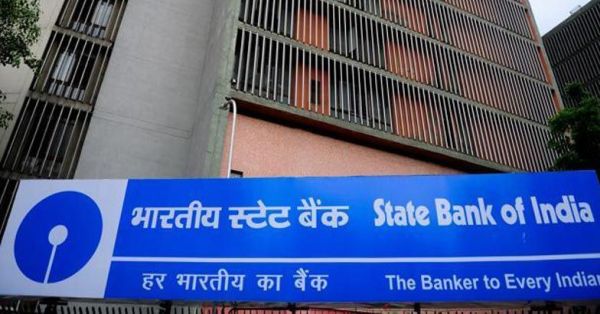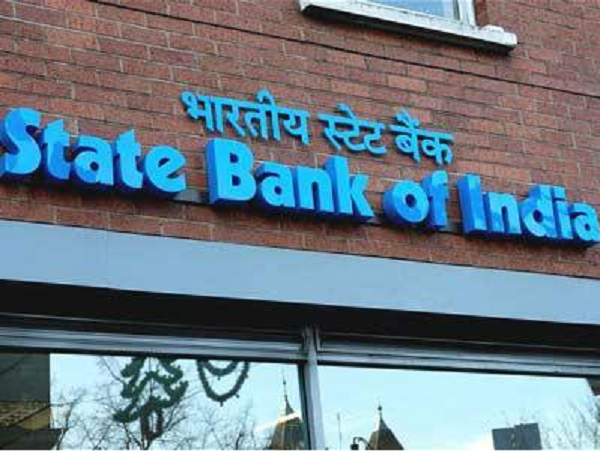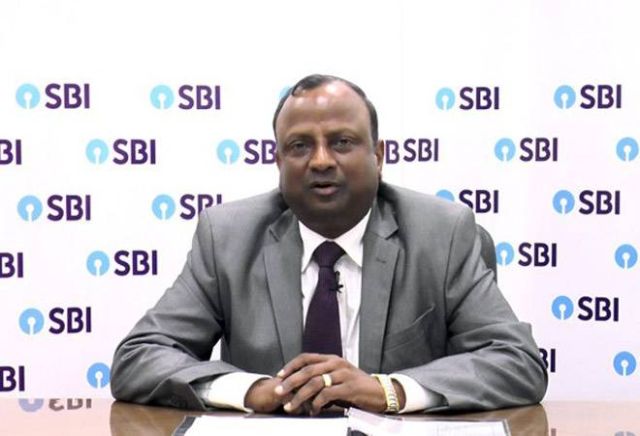
by Editor | May 25, 2021 | Business, Medium Enterprise, SMEs
 New Delhi : The RBI’s decision to discontinue the Letters of Undertaking (LoUs) or Letters of Comfort (LoC) might increase the credit cost for imports as it will lead to a shift towards “other off-balance sheet” products, said a State Bank of India (SBI) report on Friday.
New Delhi : The RBI’s decision to discontinue the Letters of Undertaking (LoUs) or Letters of Comfort (LoC) might increase the credit cost for imports as it will lead to a shift towards “other off-balance sheet” products, said a State Bank of India (SBI) report on Friday.
According to SBI Ecowrap report, the shift to “other off-balance sheet” products will be “administratively time consuming” and in the short-term might impact export funding as well.
On March 13, RBI decided to discontinue the system in the wake of the Rs 12,600 crore fraud at the state-run Punjab National Bank (PNB).
“Banning LoUs/LoCs might lead to shifting to other off balance sheet products — LCs, Bank Guarantees, other fund based facilities or on to balance sheet,” the SBI Ecowrap report said.
“We, however, believe the shift to other off balance sheet products if occurs, will be administratively time consuming. However capital charge may vary for different products leading to changes in capital requirements in either direction depending on the product used and associated risk.”
Earlier, banks were permitted to issue guarantee/LoU/LoC in favour of overseas supplier, bank or financial institution up to $20 million per import transaction under the automatic route for a maximum period up to one year in case of import of non-capital goods.
As per the latest available RBI data, guarantees given on behalf of constituents outside India stood at Rs 1.95 lakh crore as on March 31, 2017.
—IANS

by Editor | May 25, 2021 | Opinions
 By Taponeel Mukherjee,
By Taponeel Mukherjee,
The State Bank of India’s (SBI) decision earlier this week to not fund interest payments during the infrastructure construction phase is not only a move to manage its exposure to infrastructure going forward, but also a call to think of innovative solutions to finance the construction phase of infrastructure projects in India.
The earlier mechanism, where interest payments were capitalised during the construction phase followed by repayment once the project was commercially operational, will have to change to some extent. We can either progress towards a financing mechanism where an alternative lender provides additional support to the infrastructure project during the construction phase or move towards creating a “construction bank” targeted at infrastructure.
It is important to realise the impact of SBI’s decision. SBI and the other public sector banks (PSBs) with short-dated liabilities are simply not equipped to finance long-dated infrastructure assets. In addition, their technical and operational capacity to understand the risks involved in infrastructure financing is also debatable.
From the infrastructure sector’s perspective, not being able to capitalise interest payments during the construction phase means new projects will be even harder to execute. For India, it is important that we find solutions that address issues faced by both PSBs and the infrastructure sector. The long-term aim must be to wean the infrastructure sector off PSB financing and yet promote infrastructure creation.
SBI’s decision may create an opportunity for specialised lenders to finance the interest payments during the construction phase. For private infrastructure financiers with specialised knowledge, this presents an opportunity to assist in creating financing mechanisms using debt or hybrid structures that will allow projects to finance the interest payments.
The government needs to also start thinking on the lines of creating a construction bank in India. This can look to finance not just the interest payments during the construction phase but also other financial requirements. To take the idea of an construction bank forward, there is the potential to create a quasi-government institution that will take care of the entire construction phase. Infrastructure projects financed by this bank will be auctioned to players interested in operating these projects after the construction phase is over.
This will effectively be an “asset recycling” mechanism, whereby commercially operational assets can be leased out to private capital. A construction bank that successfully creates projects and then leases them to private capital will achieve the dual aim of expediting infrastructure creation and assisting in the flow of private capital into the sector. It can be a game changer.
However, it is important to adopt a gradual approach to the creation of such a bank.
Firstly, the construction bank must have a clear mandate in terms of the projects it will construct. We recommend starting with sectors in which projects will be fully financially feasible. That is, projects constructed can be leased out for 25- to 30-year concessions to private capital for the government to recover the construction cost and a risk premium for the risk undertaken. The aim will be to recycle this capital to build more infrastructure projects.
Secondly, the bank will have to be a central point for the various government departments involved in the process. It will be essential that it expedites the process around infrastructure creation by coordinating between various government departments. This will require the bank to have powers that allow it to manage the approvals process faster. It can add significant value where private capital often struggles.
Thirdly, the bank will have to ensure that it has access to the best “human capital” available to deal with both operational and financial risks involved in the construction phase of infrastructure projects.
Fourthly, it must have a defined corpus of funds. And finally, it should have a well-defined information and risk management system in place. This system will have to be improved as the bank scales up its investments. Essentially, we need to create a template for the working of a construction bank that will eventually help finance much needed complex infrastructure.
It is said “every cloud has a silver lining”. SBI’s decision is an opportunity for the infrastructure ecosystem to innovate and move forward. Specialised lenders have an opportunity to partake in infrastructure creation. In the big picture, the government must create a variant of a construction bank to boost infrastructure creation in India.
(Taponeel Mukherjee heads Development Tracks, an infrastructure advisory firm. Views expressed are personal. He can be contacted at taponeel.mukherjee@development-tracks.com or @Taponeel on Twitter)
—IANS

by Editor | May 25, 2021 | Banking, Corporate, Corporate finance, Economy, Markets, News
 Mumbai : State-run State Bank of India (SBI) on Monday announced a hefty reduction in its lending base rate from the New Year by 30 basis points (bps), to 8.65 per cent per annum.
Mumbai : State-run State Bank of India (SBI) on Monday announced a hefty reduction in its lending base rate from the New Year by 30 basis points (bps), to 8.65 per cent per annum.
With this reduction from the earlier base rate of 8.95 per cent, SBI’s base rate has become the lowest among commercial banks, coming as a relief to its many retail borrowers, particularly of home and student loans.
Similarly, the bank’s Benchmark Prime Lending Rate (BPLR) was also reduced with effect from January 1, to 13.40 per cent yearly, from the earlier 13.70 per cent p.a.
“The revised base rate is reduced from 8.95 per cent to 8.65 per cent for existing customers and BPLR is reduced from 13.70 per cent to 13.40 per cent,” an SBI release said here.
“Additionally, the bank has decided to extend ongoing waiver on home loan processing fees till March 31, 2018, for new customers keen on buying their dream house and other customers looking to switch their existing loans to SBI,” it added.
There was, however, no change made to SBI’s Marginal Cost of Lending Rates (MCLR), the later system whereby rates are fixed for a one-year period and revised only at the end of each year.
The SBI had earlier revised its base rate by 5 basis points on September 28, while some other public sector banks like Andhra Bank and Bank of Baroda have also announced cuts in base rates.
“The reduction in base rate is a new year’s gift to the bank’s loyal customers as a large number of consumers who have their loan linked to base rate will be benefitted by decrease in rates,” MD, Retail and Digital Banking, P.K. Gupta said in the statement.
“This reduction is part of bank’s efforts to ensure transmission of reduction in the policy rates in the recent past. Approximately 80 lakh customers will be benefitted by this move,” he said.
In this connection, the Reserve Bank of India (RBI) has earlier pointed out problems around lending rate calculations, which are also holding up proper transmission by commercial banks of the interest rate cuts made by the central bank.
“Arbitrariness in calculating the base rate and MCLR and spreads charged over them has undermined the integrity of the interest rate setting process. The base rate and MCLR regime is also not in sync with global practices on pricing of bank loans,” the RBI had said.
Banks’ base rate on an average reduced 0.61 per cent in the period between December 2014 and October 2016, when the RBI lowered its repo, or short-term lending rate for commercial banks, by 1.75 per cent.
—IANS

by Editor | May 25, 2021 | Corporate, Corporate Buzz

Rajnish Kumar
New Delhi : A day after Reliance Communications (RCOM) announced it was selling its wireless assets to Reliance Jio, State Bank of India Chairman Rajnish Kumar on Friday termed it a good development and would hopefully set an example for other promoters.
“It is a very good and welcome development. The banks have been fully protected and no loss is expected. Despite the fact that there is a stress in the telecom sector, I am hoping that this will set a very good example for the other promoters also of the companies which are under stress,” Kumar told BTVi in an interview.
Reliance Jio Infocomm (RJIL), a subsidiary of Reliance Industries Limited, on Thursday announced signing of a “definitive agreement” for the acquisition of specified assets of RCOM and its affiliates.
Consequent to the agreement, Jio or its nominees will acquire assets under four categories — towers, optic fibre cable network, spectrum and media convergence nodes — from RCOM and its affiliates, Jio said in a statement on Thursday.
RCOM’s assets which were put up for monetisation include 122.4 MHz of 4G Spectrum in the 800/900/1800/2100 MHz bands, over 43,000 towers, around 1.78 lakh km of fibre with pan-India footprint and 248 media convergence nodes, covering five million sq ft used for hosting telecom infrastructure.
Reliance Group Chairman Anil Ambani had on Tuesday said the company has achieved full resolution of Reliance Communications’ debt, reducing it by Rs 25,000 crore to Rs 6,000 crore by monetising assets.
RCOM bonds jumped from 34 cents to 55 cents on announcement of asset sales to Jio, according to industry sources.
“RIL’s acquisition of RCOM’s wireless telecom infrastructure, while not entirely surprising, does bring synergies for RIL’s telecom business which currently has lease/sharing arrangements with RCOM for some of its existing infrastructure – spectrum, towers and optic fibre backbone,” analyst Morgan Stanley said in a report.
Maintaining its upward trajectory RCOM shares were trading at Rs 34.98 per share, up 12.98 per cent at 12.37 p.m. at the BSE.
—IANS

by Editor | May 25, 2021 | Banking, Corporate, Corporate finance, Corporate Governance, Economy, Finance, Markets, Networking, News, Online Marketing, Politics, Social Media, Technology
 New Delhi : State Bank of India (SBI) will unveil the country’s first integrated lifestyle and banking digital platform on Friday to be launched here by Finance Minister Arun Jaitley, according to a statement from the public sector bank.
New Delhi : State Bank of India (SBI) will unveil the country’s first integrated lifestyle and banking digital platform on Friday to be launched here by Finance Minister Arun Jaitley, according to a statement from the public sector bank.
YONO, the acronym for ‘You Only Need One’, will be the first digital banking platform to offer customised products and offers from over 60 e-commerce players by leveraging analytics, besides a range of banking and financial services, the SBI release said here.
“In addition…, YONO will also allow customers to meet their lifestyle needs across 14 categories including booking and renting cabs, entertainment, dining experience, travel and stay, medical needs and so on,” it said.
To provide the customised offers and discounts, SBI has partnered with e-commerce players including Amazon, Uber, Ola, Myntra, Jabong, Shoppers Stop, Cox & Kings, Thomas Cook, Yatra, Airbnb, Swiggy and Byjus, it said.
The SBI said the product employs the latest digital technologies such as artificial intelligence (AI), predictive analytics and machine learning, and can be accessed through a mobile application and web portal.
“This will also be the first to offer online purchase and view of insurance policies within the portal, without redirecting customer to respective service provider, and to seamlessly access and purchase investment products,” the release said.
“Customers will be able to seamlessly access… services with a single user ID and password. The portal has been designed with minimum possible clicks and easy to understand descriptions,” SBI Chairman Rajnish Kumar said in a statement.
—IANS

 New Delhi : The RBI’s decision to discontinue the Letters of Undertaking (LoUs) or Letters of Comfort (LoC) might increase the credit cost for imports as it will lead to a shift towards “other off-balance sheet” products, said a State Bank of India (SBI) report on Friday.
New Delhi : The RBI’s decision to discontinue the Letters of Undertaking (LoUs) or Letters of Comfort (LoC) might increase the credit cost for imports as it will lead to a shift towards “other off-balance sheet” products, said a State Bank of India (SBI) report on Friday.
